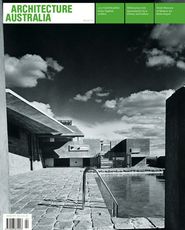In the lastest in our series, Phil Harris argues that architecture matters because, unlike ‘building’, it can provide both fit and a show. And we need both.
“Architecture matters because we as creatures need a show, and we need a fit; and for some, even better: a bloody good show and a bloody good fit.
No show and no fit and our very spirit may shrivel up and die.”
Perhaps architecture is to buildings as animals are to amoeba. In a procreative sense, some things – buildings and amoeba – simply multiply; others are the product of an erotic display of courtship, or at least a memorable partnership.
Procreate, v. now rare. Trans. To beget, engender, generate.… (The Shorter Oxford)
Now of course courtship could be as simple as a few beers and a quick lift of the eyelid (in the case of some real animals) – but usually in the animal world it contains some sense of rigmarole – a strut, a dance, a bit of necking, a show of feathers, a display of blue objects in a bower, a tour of etchings, at least a bit of running around in circles and a sniff under the tail.… ›› My proposition is that, unlike its amoebic partner, building, architecture clocks in at this sensitive edge of town. It needs to be a turn-on for those who engage with it. So as not to abort or turn out as a mongrel, it should respect courtship rigmarole and respond to the sensibilities of its partners-in-life. For example, it should convey an appropriate message of strength and safety, of durability (or demountability), of cost-effectiveness (or opulence), as well as be dressed in the right manner, in the right clothes.
As soon as we think of clothes we imagine cut, adorning patterns, coordinating colours, the addition of jewellery, but also comfort and propriety. Similarly, words soon morph into poetry and literature, or at least a joke, but they must also communicate – that is, be understood and make sense. Sounds lead us to music or a soundscape, the painting of a picture of place and activity through sound – but if not sung with feeling or orchestrated properly, or taken out of context, they revert to mere sounds, and leave us confused or irritated. Images lead us to art, and again, emotive communication – if they’re in the right context at the right time in the right light for the right audience. And certain landscapes come to be seen as beautiful, or even imbued with spiritual meaning, but only if they’re understood and cared for, and approached correctly and not trampled or scarred by the uncaring.
So, too, in architecture we have aesthetic potential – show – and we have the pragmatic and delicate notion of fit.
Or, to look at this balance in another way. As disarmingly gorgeous as Marilyn Monroe or James Dean or J-Lo or Brad Pitt might be/have been, that doesn’t mean they’ve got the magic – the nuances of responsiveness and mutual understanding that you – and that means you – want to bed down with for life (or at least a week), at least not compared to the person you’re reading this next to (and if that happens to be in bed, then oh my!, go back to para 1 and relearn the art of courtship). So, again, show alone is not likely to be enough. Rather, it seems that the great agent of procreation, courtship, is designed to deliver on fit.
Which is good, because with fit there’s a richness there that’s as deep as you wish to go, for procreation and fit also convey that sense of past-now-future. Every creature is proud of its young, and carries the marks of its ancestors – and the language of its ancestors. Their adoptive landscape is their inherited world. Most (I can think of Western humanity as one exception) innately adopt environmental and cultural habits that maintain continuance of this world, their ecological context. This includes an avoidance of poisons, and an eye to resource management that limits the possibility of over-harvesting and that fits with the rhythm of the seasons. And so a future ensues.
So, too, it is with architecture. The notion of an architecture that learns from the past does not mean one that rediscovers and copies adorning flourishes and other pastiches with which to clothe a new structure. Rather, an architecture aware of its roots will learn the lessons of its antecedents in affording meaningful shelter through pleasing the gods (and masters and neighbours), in incorporating technologies, skills and materials to forge a fit with place and time. An architecture that is rooted in its past (rather than merely dipping into it) will work in an understandable language – it will resonate (on and on). Architecture built of these lessons will innately seek to respect its setting, avoid polluting industries and toxic substances, draw frugally from a place’s resource availabilities, and respond to climate and seasons. And so a built fabric for the future will continue to unroll.
Architecture matters because we as creatures need a show, and we need a fit; and for some, even better: a bloody good show and a bloody good fit. No show and no fit and our very spirit may shrivel up and die. It would be terrible to revert to a primordial pond where as amoeba we inhabit mere buildings.
›› Phil Harris is a director of Troppo Architects and has a very nice dog (who loves him).















